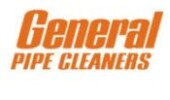
Necessary Accessories
February 21, 2024 | By Gerry Wagner
With the exponential growth in mini split installations, Gerry Wagner shares some of his favourite new tools for the trade.

(Adobe Stock)
Mini splits have become so popular that their sales and installations increase annually by double digits, and as a result an onslaught of mini split installation/service aids and accessories have hit the market—some good, some not so much. But there are a few I now consider necessities for anyone in the trade.
The first essential product has to be a surge protection device. I’m always shocked (pun intended) when I’m conducting a mini split training class and find out many installers and technicians have never considered surge protection or even heard of it as it relates to HVAC equipment.
A surge protection device will protect equipment and the control boards within equipment from damaging voltage surges, whether man-made in the form of something internal to the grid or an act of God like a lightning strike.
In a home my wife, Patricia, and I owned in New York state, we had an older inverter mini split that heated a four-season room (a glass enclosed deck if you will). The compressor fried on its own, but because I had a surge protector on the system it did not take out the board along with it.
How do I know the surge protector saved the board? Easy, the surge protector has a little green LED light that illuminates as long as the surge protector is not spent (most are one and done). In my case, the surge protector was spent, clearly sacrificing itself to save the board when the compressor fried—impressive!
Those of you who know me, or read my articles regularly, know that I preach to small business owners that we must always do everything we can to limit our liability. Do all we can to isolate and insulate ourselves and our businesses from liability. A surge protector, a component that in most cases nets out to less than $125, can save you thousands of dollars in lost equipment and liability expenses.
We all put little stickers on equipment that we have installed that say, “When you need service, call ACME Heating & Air.” It’s how we get repeat business, and it’s something all contractors have done since time immemorial. But that sticker has the potential to take you from being the installer to the defendant when that equipment is destroyed by a power surge.
We need to protect ourselves from that potential, and a surge protector does just that!
I have used the Intermatic AG3000 for many years, and recently I used the Rectorseal RSH-50. I see where my friends at Diversitech have introduced the Surge-Trap surge protector. Any one of these products should be included in every mini split installation no matter where that installation is taking place.
FLAIR FOR FLARING
My second item would be a proper flaring tool. Because today’s mini split systems use R410A refrigerant and run at higher pressures than R22, the diameter of the flare needs to be larger to compensate for the higher pressures the connection will experience.
That said, we need to use a flaring tool specifically designed to create the R410A flare. I like the Yellow Jacket Deluxe 45-degree flaring tool.
The key to this tool is that it has a tubing stop; if used properly it won’t allow you to over or under flare the tubing. Now, I won’t say the tool is idiot-proof, because idiots try real hard, but if the tubing stop feature is used as designed the flare diameter and depth will be perfect each and every time.
Now, I’m an old guy so I tend to do things “old school,” but my friend Jeremy Torra of Centric Sales, the NAVAC tool representative, has turned me onto their battery powered flaring tool, the NEF6LM. Besides being “state of the art” technology it also has a tubing stop—brilliant!
Now, a flaring tool alone does not guarantee a perfect, non-leaking flare, but one more element will.
Nylog by Refrigeration Technologies will assist in creating a seal between the two mechanical components of the flare. I’m a huge believer in Nylog and preach its value in every training event I conduct.
Clean Cleaning
The last item I want to address is a service-related item. It’s a product that makes cleaning the mini split evaporator coil and blower wheel relatively simple and easy.
The SpeedClean Mini Split Bib Kit, the Rectorseal Desolv Cleaning Kit and the Nu-Calgon Complete Care Mini Split Kit all allow for the cleaning of an indoor unit coil and blower wheel without extensive disassembly of the indoor unit and without any damage to finished walls and floors.
The three products are very similar in that they provide what I call a mini split diaper. The diaper essentially creates a basketball hoop effect around the bottom of the indoor unit.
The bottom of the diaper is then directed into a five-gallon bucket in which the kit was packaged, and then the cleaning process begins. The three products are a bit different in how the diaper attaches, but they all provide a watertight seal that allows power washing of the coil and blower wheel with all fluids being directed into the bucket—Ingenious!
I have heard horror stories from service techs of how they essentially completely disassembled a mini split indoor unit in order to clean it. “No more,” I say. These products are inexpensive, and a single kit allows for multiple uses.
TOOL YOU CAN USE
The exponential growth of the mini split market here in Canada provides an opportunity for service companies to find new revenue streams like mini split evaporator cleaning.
All the companies I mentioned and others are producing low-cost service products to help us reap some of the benefits of this extraordinary growth. <>

 Gerry Wagner is the vice president of business development for Bathica in Canada. He has 43 years in the HVAC/R industry working in manufacturing, contracting and training. You can contact Gerry by email: GerryWagner@Bathica.com
Gerry Wagner is the vice president of business development for Bathica in Canada. He has 43 years in the HVAC/R industry working in manufacturing, contracting and training. You can contact Gerry by email: GerryWagner@Bathica.com


